Biography
Richard Stone has painted portraits of the Royal Family for more than four decades. At the age of 22, he became Britain’s youngest royal portrait artist since Sir Thomas Lawrence painted Queen Charlotte in 1790 at the age of 21. Although he has had little formal art training, Richard Stone’s success is a direct result of a natural talent and a strong determination to succeed in the career he has pursued since childhood.
Born in 1951 the son of a Colchester postman, Richard began cultivating his talent following an accident at the age of four that left him with a fractured skull and permanent deafness in his right ear. The young artist began sketching in a notebook and later painted to communicate with his family and teachers, demonstrating a keen sense of perspective and mixing colours.
From the age of eight, he was actively encouraged by his next door neighbour, Frederick Heron. An amateur Essex painter, Heron taught Richard the basics of art. Then when he was fourteen, Richard went to the Royal Academy Summer Exhibition, where he saw a portrait by Sir Gerald Kelly. With the directness that has subsequently characterised his career, he wrote to Sir Gerald, saying how much he had admired the portrait and asking if he could possibly help and advise him. The result was prompt. Sir Gerald could offer him all the reasons against being a portrait painter, but if he would like to call and see him, and bring his work, he was welcome. Richard took along what work he had done, listened to Sir Gerald’s reasons, and would not be dissuaded. It was the start of a friendship that was to last until Sir Gerald’s death in 1972.
Sir Gerald had been an ideal tutor. With his help and advice, Richard set about becoming a portrait painter. The achievements are formidable. Following Sir Gerald’s advice, he started knocking on doors in an attempt to find work, and he was successful. One of his earliest subjects was Sir Arthur Bliss, the Master of the Queen’s Musick. As well as Sir Adrian Boult, another contact Richard made was at Clarence House, Queen Elizabeth, the Queen Mother’s London residence. When he was put through to the Comptroller of the Household, Lord Adam Gordon, Richard made his mark with a memorable phrase, “Don’t ring off, I could be the latter-day Rembrandt”. This singular lack of modesty paid off and Lord Adam listened to his reasons for wanting to paint the Queen Mother. After accepting a commission to produce a likeness of Lady Adam Gordon, Richard was invited to paint the Queen Mother’s portrait. The finished work was greeted with tremendous critical acclaim, but many were sceptical that the young artist could sustain a successful career.
Defying the critics, Richard saw this as the first step that would lead to the achievement of his childhood ambition. Unveiled at the National Portrait Gallery in 1992, his portrait of HM Queen Elizabeth II is his most famous work. Commissioned by the burghers of Colchester, the eight foot by five foot canvas hangs today in the town’s Moot Hall, and represents three years work and some seven sittings. The portrait has been hailed as one of the finest painted during Her Majesty’s reign and was subsequently chosen by Her Majesty as the Royal Mail airmail stamp. To commemorate HM becoming Britain’s Longest Reigning Monarch, Richard was commissioned by The Realms to paint Her Majesty’s portrait again in 2015. Upon completion, it was acquired by The Royal Collection and now hangs in St James’s Palace, London.
Richard continues to paint senior members of the Royal Family, alongside other prestigious commissions. His sitters have included Nelson Mandela, Luciano Pavarotti, Baroness Thatcher, Dame Joan Sutherland and Archbishop Desmond Tutu.
Richard is married and has a son and two daughters. He lives in Colchester where he maintains a studio.
Biographical Details
1951
Richard William Stone born on 5 June in Witham, Essex.
1952
Family moves to Colchester
1959 - 79
Mr Frederick Heron (a neighbour) is early artistic influence
1965
Meets Sir Gerald Kelly, KCVO, PPRA, and continues to make regular visits to his studio until Kelly’s death in 1972
1972
Study of Sir Adrian Boult acquired by the National Portrait Gallery, London
1975
Study of Sir Arthur Bliss acquired by the National Portrait Gallery, London
1979
Anglia Television documentary, ‘Morecambe and Stone’
1983 - 6
Exhibits on Cunard’s Queen Elizabeth 2, lecturing on history of royal portraiture
1985
Given Freedom of the City of London
1987
Gives lecture at Huntington Library and Art Gallery, San Marino, California
1990
Made an honorary Texan and given the Freedom of the City of Austin
1992
Portrait of HM Queen Elizabeth II unveiled at National Portrait Gallery, London
2000
Lectures at the Metropolitan Museum of Art, New York
2001
Lectures at the Wallace Collection, London
2001
Awarded Paul Harris Fellowship, Rotary Club, Australia
2001
Portrait of Dame Joan Sutherland presented to the people of Australia, Melbourne
2002
Archbishop Desmond Tutu sittings in Cape Town
2004
‘Notable Portraits’ one man exhibition at Partridge Fine Arts, Bond Street, London
2008
Nelson Mandela portrait auctioned at Nelson Mandela’s 90th Birthday Celebration, Hyde Park, London
2009
Margaret Thatcher, The Downing Street Portrait, unveiled by her at No 10 Downing Street, London
2011
Receives Honorary Doctorate from the University of Essex
2011
Portrait of HRH The Prince of Wales unveiled at The Goldsmiths’ Company, London
2013
Portrait of HM Queen Elizabeth II becomes Royal Mail stamp
2015
HM Queen Elizabeth II, The Realms Portrait, unveiled at St James’s Palace, London
2018
Work exhibited at Masterpiece fair, London
Profile by Norman Wells
Enduring fairy tales often involve monarchs and children – like the one about the four-year-old boy who stood outside a royal palace and announced to his mother that he would one day paint the Queen’s portrait; which duly came to pass. Only, this story is true.
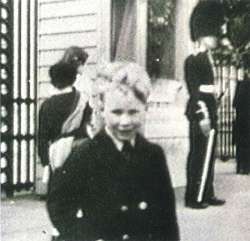
Richard Stone stood outside Buckingham Palace and made that prediction in 1955. Its realisation was unveiled at the National Portrait Gallery in 1992, by which time the postman’s son from Colchester had established himself as one of the Royal Family’s favourite portrait artists. To date he has produced one royal portrait a year for the past thirty years – including five of the late Queen Elizabeth The Queen Mother – and has painted all the members of the recent Royal Family except the late Princess Diana.
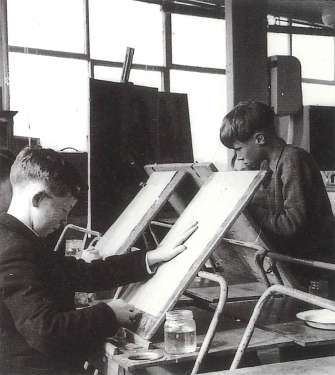
The young Richard was nearly denied the chance to pursue his ambition, or any other for that matter. At Christmas 1955, just months after he’d stood outside Buckingham Palace, he fell down the stairs at his family’s semi-detached house in Colchester, sustaining serious head injuries which put him in a coma for weeks. ‘As fate would have it, I ended up being terribly deaf,’ said Richard. ‘For the following two years I found hearing extremely difficult and I was tormented daily with extraordinary noises in my head. My parents took me to every possible specialist to see whether anything could be done to repair my broken eardrum.’ Richard remains partially deaf today.
His deafness meant an isolated existence at primary school, where teachers let him draw most of the time. ‘I’m convinced that, as it was my only source of amusement – and, quite possibly, communication – it created in me a need to draw quickly and, perhaps, accurately. I think I developed a facility to draw quite well because I could do nothing else.’
Later, at secondary school, Richard was encouraged to draw by his art teacher and headmaster. ‘But the person I pay most tribute to was a neighbour, Fred Heron. An amateur painter, he saw me painting in the garden and convinced my parents I was worth the investment in a box of oil colours. Fred then gave me exercises in paint and technique, and an appreciation of art through his book collection.’
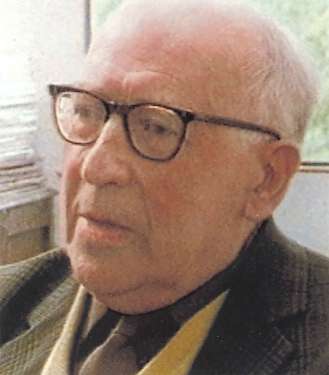
In 1965, Fred Heron took Richard to the Royal Academy Summer Exhibition for his fourteenth birthday. ‘There, I stopped dead in front of a picture by Sir Gerald Kelly of the composer Ralph Vaughan Williams. It had such a presence. It sort of came out of the frame and shook you by the hand. It was a revelation for me, a life-changing circumstance. I wrote a fan letter to Gerald Kelly, who’d been President of the Royal Academy after Sir Alfred Munnings, saying I wanted to become a portrait painter. He replied, asking me to bring as much of my work as I could to his London studio; adding that he’d try to dissuade me from embarking on such a dangerous course.’
Richard had spent a year attending weekly life classes at Colchester School of Art, and had added to his portfolio. Kelly’s secretary asked him to spread his work across the floor of the great artist’s drawing room. Richard recalled: ‘Sir Gerald, who was in his eighties, shuffled in and took some time looking at the drawings before saying: “Mr Stone, thank you for bringing your work. A lot of enthusiasm, but not much talent. Thank you for coming.”
‘I was stunned, assuming I was this little artistic star at my secondary school producing what I thought were more than competent drawings of the nude. Sir Gerald could see I was upset and explained that, in his teens, he’d worked as an artist’s assistant in Paris. He showed me a tiny clay model of a hand. Rodin had given it to him for helping prepare clay for the great sculptor.
Looking at the hand, Sir Gerald then started educating me, saying you don’t need the whole body or figure to understand or represent someone’s personality – you could tell a lot about the figure behind that hand just by looking at it – and adding: “That’s what missing from your work. You have a facility to draw but it has no presence.”
‘He was opening up a new vista for me in understanding art. He asked me to fetch a panel from the corner of the studio. It was a landscape painting I identified as a work by an Impressionist, the only one of whom I could think of was Monet.“That’s right,” he said.
“At weekends I became Monet’s barrow-boy when he was painting the ‘Lily Pond’ series. My job was to walk round with a special wheelbarrow carrying canvases lined up with times marked on them. I had to be one canvas or so ahead when Monet was working round the pond, and I had to set out the palette and brushes and have the canvas up on the easel so he could move effortlessly from one picture to another – because he was so precise about capturing the light at specific times.”
‘Of course, to handle something Monet had given him was phenomenal. Sir Gerald had so many stories, and when I left he said: “Come again, and I’ll tell you some more.” I asked if I could help him around the studio, but he declined, saying: “You can bring your work to me as often as you like. I’ll look at it for you. But if you become my assistant you’ll just become another Gerald Kelly. You’ve got to be a Richard Stone.”
’There began a kind of friendship between the keen youngster and the old master. Over four years, Richard gained in skill under Sir Gerald’s freely given tutelage. ‘The first exercise he set me was to paint a peach. I painted several, but he didn’t like any of them. He said: “You want to become a portrait painter: capture the bloom on the flesh of a peach and you’re part way to understanding the way the light falls, and the effect that’s created, on the human skin.” He sent me off to paint more, and the exercise continued over the time I knew him.’
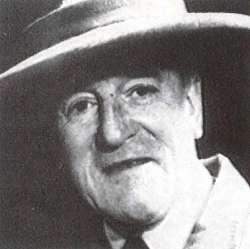
Richard’s parents were keen their son should go to an art school, thinking a diploma would be a useful qualification. Kelly thought otherwise, believing Richard had the kind of personality to present himself well enough to attract work. Despite his developing skills, Richard was turned down by the Royal Academy, the Slade and the Colchester School of Art. ‘They did me a favour,’ he reflects. ‘What they did was to spur me on to go it alone. My parents were worried, but did nothing to dissuade me; and Sir Gerald kindly spoke to them, saying he thought I would make a go of it.’
With Sir Gerald Kelly’s encouragement, Richard had already produced a portrait of Sir Arthur Bliss, Master of the Queen’s Musick, while he was still at school. Sir Gerald pronounced it his pupil’s best to date; there was no more he could teach him and it was time to ‘knock on doors’. Within weeks he was dead.
‘I can’t describe the thrill of meeting that man,’ said Richard. ‘After much persuasion he showed me his own work. The commission that gave him the most pleasure, and the most agony, was painting the state portraits of George VI and his consort, Queen Elizabeth The Queen Mother. He spent seven years on those at Windsor Castle, and said what a wonderful person the Queen Mother was – a perfect sitter, as I might find out were I ever to paint her portrait.
‘After he died I phoned Clarence House. The person who had the misfortune to pick up the phone was Lord Adam Gordon, Comptroller to the Queen Mother’s household. He said he couldn’t have any Tom, Dick or Harry ringing up for sittings with the Queen Mother as she was a very busy lady – to which I replied he hadn’t even seen my work yet: I could be a latter-day Rembrandt! The line went quiet. Eventually he spoke, asking me to bring my portfolio to his office. Once he’d seen it, he
commissioned me to draw his wife and invited me to a party where, he said, there were people from the Court who’d be interested in meeting me. It was through them that I achieved my first sitting with the Queen Mother.’
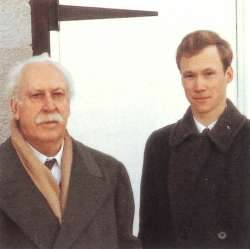
Any royal commission has to be granted through an official commissioning body – and Lord Adam Gordon told Richard that the Royal Anglian Regiment were about to celebrate the tenth anniversary of their amalgamation. As the Queen Mother was their honorary Colonel-in-Chief, an official portrait would be appropriate to mark the occasion. A second portrait for the regiment followed soon after.
‘The Queen Mother was amazingly generous with her time,’ said Richard, ‘and would invite me for lunch or tea and to meet friends. She would bring her family to view the portraits in progress. It was astonishing, really – I was only twenty-one. She had an amazing presence. She was the consummate professional when it came to meeting people and making them feel welcome and comfortable, and she was interested in so many things. We’d chat about art. It was wonderful hearing her talk about sitting for artists like John Singer Sargent, Augustus John, Graham Sutherland, John Bratby and, of course, Gerald Kelly – she’d sat for everyone.’
Other royal work followed, including a commission from Colchester’s mayor (now its MP), Bob Russell, for a portrait of the Queen to mark the 800th anniversary of the town’s first Royal Charter. Having realised his boyhood ambition, Richard would later donate the picture to the town. ‘The sittings were difficult to fit in with the Queen’s schedule, and I had to spread them over three summers when the light was consistent. She gave me some ten sittings, after which I went to Buckingham Palace to study the Parliamentary Robes of State she’s wearing in the picture.’
Starting with sketches on a ten-inch by eight-inch canvas, the final portrait ended up being eight feet by five feet. ‘It’s probably been the picture that most people will remember – one I invested a phenomenal amount of time in. I gave up all other work for three years. The nicest
compliment I’ve ever had came when the Queen herself selected it for a print from all her portraits as the one that best summed up her role. During her sittings she had been fascinating, funny and marvellous company. Hopefully some of those aspects show through in the portrait.’
While his portraits of the Royal Family are Richard’s best-known works, they only account for a small part of his output. ‘Being ever mindful that the mortgage is paid from commissions I receive, I have to know where the next one’s coming from,’ he said. He often travels abroad to paint portraits of private individuals and corporate figures as well as those in the public eye. These have included a senior industry official in China – where the government banquet to unveil the portrait was so grand that Richard thought he had been mistaken for Tony Blair – and, to generate funds for charities, South Africa’s Archbishop Desmond Tutu, Australian diva Dame Joan Sutherland, and Baroness Thatcher, the former British Prime Minister.
While his portfolio includes some of the world’s best-known people, Richard insists his subjects don’t have to be celebrities to ‘give him a buzz’. ‘Everyone has the most remarkable story to tell, no matter what their background. It’s an enormous privilege to be in a situation where they trust me enough to want to tell me that story, and it’s useful in the process of painting the portrait. It’s an unusual circumstance meeting a stranger who is somehow totally focused on you. It’s the people that give me the excitement and the interest – and you don’t have to be famous to create the kind of energy and stimulation I need to paint a portrait.’
Major Commissions
Sir Arthur Bliss, Master of the Queen’s Musick.
National Portrait Gallery, London and Pembroke College, Cambridge.
Sir Adrian Boult. Study acquired by the National Portrait Gallery, London.
Sir Yehudi Menuhin. Private collection.
HM Queen Elizabeth, The Queen Mother, (two portraits) Royal Anglian Regiment.
Chief Red Fox. Private collection.
Burmese National Dance Company. Private collection.
HRH Princess Margaret, (two portraits) Royal Anglian Regiment.
HRH Princess Alice, Duchess of Gloucester, (three portraits) Royal Anglian Regiment.
HRH Princess Michael of Kent. Private collection.
Mr Eric Morecambe, Anglia Television Limited.
Prof. Donald Denman. Dept. Land Economy, Cambridge.
Sir Robert Carswell. Private collection.
Prof. Ivor A Richards. Magdalene College, Cambridge.
Prof. Clive Parry. Downing College, Cambridge.
Prof. Jeremy Cowan. Director, S.O.A.S., University of London.
Prof. Stuart Sutherland. Principal, King’s College, London.
Dame Mary Donaldson, G.B.E., Mansion House, London.
Sir Allan Davis, G.B.E., Painters-Stainers Company, London.
Commander A.H.F. Wilkes. Private collection.
Sir Ralph Perring, Bt., Morden College, Blackheath.
Lord Home. Private collection.
Lord Wilson Rievaulx. Private collection.
Lord Callaghan. Private collection.
Ambassador Charles H. Price II, United States Ambassador, Private collection.
Mrs Beth Chatto. Private collection.
Dr Marvin Goldberger. Caltech, California, USA
HRH The Princess Royal. Carmen Company, London.
Mr Ronald Lancaster. Lancaster, plc.
HRH Prince Michael of Kent. Institute of the Motor Industry.
Lord Grey of Naunton. University of Ulster.
Sir James Miskin, City of London.
Dr James Hooley. UCLA, California, USA.
HM Queen Elizabeth II. Colchester Borough Council.
Halcyon Days, London. Special limited edition box.
Mr Joseph Maitland Robinson. Downing College, Cambridge.
Mr Neil Foster. Private collection.
Lady Holt. Private collection.
Lady Buck. Private collection.
Marquess of Tavistock, Woburn Abbey.
Lord James Russell. Woburn Abbey.
Lord and Lady Robin Russell. Private collection.
Sir Evelyn de Rothschild. Private collection.
Mr William Lese. Private collection.
Mr Bruno Schroder. Schroders plc.
Ambassador William Crowe, United States Embassy, London.
Mrs. Nina Wang. Private collection.
Lord Cadogan. Cadogan Estates.
HRH The Duke of York. Staffordshire Regiment.
Mr Michael Pickard, Chairman. Royal London Insurance.
Mr Stanley Booth, Chairman. Munnings Trust.
HRH The Duke of Edinburgh. Guild of Air Pilots and Air Navigators, London.
HRH The Prince of Wales. Gordon Highlanders Museum, Aberdeen.
Dame Joan Sutherland. Joan Sutherland Performing Arts Centre, Penrith, Australia.
Mr Geng Zhao Jie, President. First Automobile Corp, China.
Baroness Thatcher, British Forces Foundation, London.
HRH The Duchess of Gloucester, The Children’s Society.
Archbishop Desmond Tutu. Private collection.
Lord Braybrooke. Essex County Council.
Mr Richard Wheeler. Lay & Wheeler Group Ltd.
HRH The Duchess of Gloucester. Royal Army Dental Corps.
Dame Julie Andrews. Private collection.
Mr Gerald Milsom. Milsom Hotels.
Baroness Thatcher. The Conservative Party.
The Rt Hon The Lord Sterling of Plaistow. Peninsular & Oriental Steam Navigation Company.
Col. Sir Neil Thorne. Provincial Grand Lodge of Essex.
Luciano Pavarotti. Private collection.
Dr James Watson. Cold Spring Harbor Laboratory.
Mrs Michael Howard. Private collection.
HRH The Duke of Gloucester. Royal Army Medical Corps.
Ambassador Charles H Price II, US Ambassador. Private collection.
Baroness Thatcher. The Ronald Reagan Presidential Library, California.
Ms Judy Naake. Private collection.
Sir Simon Jenkins. Private collection.
Mrs Nancy Reagan. Private collection.
The Rt Hon Michael Howard. The Carlton Club.
The Rt Hon Michael Howard, The Parliamentary Art Collection, London.
Baroness Thatcher. Private collection.
Mr Michael Grade. Private collection.
Dame Esther Rantzen. Private collection.
Mr Nelson Mandela. 46664 Foundation…
Mr Bernard Ribeiro CBE. The Royal College of Surgeons
Sir Neil & Lady Thorne. Private collection
Sir Neil Thorne OBE, TD, DL. Freemasons’ Hall, London.
Lord Charles Cadogan. Freemasons’ Hall London.
Her Excellency Lindiwe Mabuza,.South African High Commissioner, Private collection.
Ambassador and Mrs Robert Tuttle. Private collection.
Sir John Ritblat. British Land.
Sir Michael Marshall. Marshall of Cambridge (Holdings) Ltd.
Lady Marshall. Private Collection.
Sir Anwar Pervez. Bestway plc.
Sir John Madejski. University of Reading.
Dame Janet Smith. Lincoln’s Inn, London.
Mr Doug Insole. Essex County Cricket Club.
HRH The Prince of Wales. The Goldsmiths’ Company, London.
HRH The Duchess of Cornwall. Cunard Line, Carnival UK
HRH The Duchess of Cornwall. The Queen’s Own Rifles of Canada.
HRH The Duke of Edinburgh. University of Cambridge.
Mr Marvin Hamlisch. National Portrait Gallery, Washington DC.
Dame Fiona Woolf, Lord Mayor of London. The Worshipful Company of Wax Chandlers, London.
HM Queen Elizabeth II, The Realms Portrait,.Commissioned by the Commonwealth Nations, The Royal Collection.
HRH The Princess Royal. Royal Army Veterinary Corps.
Ms Julia Gillard AC. Private collection.
President Stjepan Mesić. President of Croatia, Private collection.
Lady Thatcher.10 Downing Street, London.
Miss Miranda Hart. Private collection.
Masterclasses & Lectures
Teaching experience/masterclasses
1970 - 1971
Copford Glebe School, Colchester (General art course)
1977 - 1983
Colchester Institute, Adult Education Programme (Portrait and figure painting)
1987 - 1988
Art Centre, Pasadena, California, U.S.A (Portrait and figure painting)
Numerous arts orientated clubs and societies.(Painting and drawing techniques.)
Lectures
1974
Plymouth City Art Gallery, Devon (Royal Portraiture)
1975
Essex University Art Society (Art History)
1980
Mercury Theatre Colchester (A painter's life - personal insight)
1983
English Speaking Union of the United States of America (History of portraiture)
1983 - 1986
Queen Elizabeth II (History of Royal Portraiture)
1986
The Minories Art Gallery, Colchester (Art & Artists)
1987
Huntington Library & Art Gallery, California, U.S.A. (18th Century portrait painters)
1988
University of Southern California, U.S.A. (18th century portraiture)
Art Centre, Pasadena, U.S.A. (Technical and practical advice)
Woodbury University, California, U.S.A. (Corporate Art)
1989
Mercury Theatre, Colchester (Painters and portraits)
Huntington Gallery, University of Texas, U.S.A.
Laguna Gloria Art Museum, Texas, U.S.A.
1997
Nassau County Museum of Art, New York
2000
Metropolitan Museum of Art, New York, U.S.A.
2001
Wallace Collection, London
Stoke-by-Nayalnd Conservative party.
2004
Cold Spring Harbour Laboratory, New York
2005
The J. Paul Getty Museum, “Politics of Portraits”
2005
The Los Angeles Regency Club
And also numerous presentations at business, social and charity functions.
Charitable Donations
Nancy Reagan - “Just Say No” campaign, Texas
Music Center - Los Angeles, California
Humanitas School Program, Pasadena, California
Texans War on Drugs Program
Sir Ralph Perring Court, Beckenham, Kent
Painters Stainers Livery Company, London
Queen Elizabeth Gate Appeal, Hyde Park, London
Los Angeles British Chamber of Commerce Annual Fundraiser
Ronald Reagan Library, California
Mayor of Colchester’s Charity Appeal
Quest Cancer Research
Nassau County Museum of Art, New York
The Children’s Society
Macmillan Cancer Research
Breast Cancer Unit, Colchester Hospital
Lions International, Lions Club of Ipswich, Presidents Appeal
Addenbrookes Hospital, Cambridge
Gordon Highlanders’s Museum, Aberdeen
Camberwell Rotary, Melbourne, Australia
Nyumbani Orphanage, Supported by British Airways Crew. Nairobi, Kenya
Conservative Party
Cold Spring Harbor Laboratory, New York
Colchester Borough Council
The Children’s Society
Addaction
Littlegarth School, Sports Hall Appeal, Nayland, Colchester
Breast Cancer Care
Students Partnership Worldwide
Centre-Parc
Colchester County High School for Girls
The Gorilla Foundation
Combat Stress
Nyumbani/ Hot Courses/ David Ross Foundation
The 46664 Foundation and The Nelson Mandela Children’s Fund (UK)
Stephan Welz Auction for CIDA City Campus, Johannesburg
The Wilderness Foundation auction in aid of the endangered Rhino, the One & Only, Cape Town, South Africa
Forever Wild Lion Conservation Initiative on behalf of the Wilderness Foundation, South Africa
Media Experience
1979
Full-length documentary film, ‘Morecambe and Stone’, Anglia Television
1981
Gainsborough Exhibition, Tate Gallery. Film report for Anglia Television
1986
Film profiles on Channel 2 News, California and Channel 9, Australia
1998 - present
Numerous interviews and work reproduced in books, newspapers and magazines worldwide
1998
TV and newspaper coverage to mark 25 years as a Royal portrait painter
2000
Various media interviews regarding Metropolitan Museum presentation, New York
2001
International Guest Judge, Camberwell Rotary Art Show, Australia
2002 - 2003
TEFAF - The European Fine Art Fair, Maastricht
Portrait of HM Queen Elizabeth II exhibited
2002
“Tiaras” Exhibition, Victoria & Albert Museum, London
Study for HM Queen Elizabeth II portrait exhibited
2002
‘Queens’ Jewels’ book by Vincent Meylan published, Assouline
2004
Official travelling exhibition in conjunction with the Government of China
2013
‘My Hero’ Miranda Hart on Eric Morecambe, BBC
2013
‘See Hear’, BBC
2013
‘Maggie and Me’, Jon Snow documentary, Channel 4
2018
‘Art, Passion & Power: The Story of The Royal Collection’, Andrew Graham-Dixon, BBC
Extensive interviews on deaths of HM The Queen Mother, Luciano Pavarotti, Nelson Mandela and Lady Thatcher
SEE MORE IN PRESS & NEWS

